Abstract
This study assessed the diagnostic accuracy of formal diagnostic criteria for canine compulsive disorder (canine CD). Canine CD is a syndrome of abnormal behaviors that are believed to result from conflict or frustration. Differential diagnoses include normal conflict behavior and learned behavior. In studies of canine CD, confidence in the diagnosis comes with knowing the accuracy of the diagnostic method. This accuracy may be quantified as the chance-corrected agreement between the diagnostic method and a 'gold standard' diagnostic test. The present study examined the agreement between diagnoses of canine CD made by an expert (the 'gold standard') and by using formal diagnostic criteria. The owners of 84 dogs suspected of having CD received 2 telephone interviews. The first utilized a detailed, pre-tested questionnaire; a dog was then diagnosed with CD if the behavioral history met 7 diagnostic criteria. The second interview was given by a behavioral expert whose diagnosis was based on personal experience. The interviewers were blind to each other's diagnoses. The chance-corrected agreement between diagnoses was minimal (kappa = 0.02) and disagreement was associated with 3 of the formal criteria: a history of conflict or frustration, an increase in the number of contexts that elicit the behavior, and an increase in the daily frequency of the behavior. Reasons for the disagreement include the order of the interviews, response biases, the setting of the interviews, and, possibly, the diversity of the behaviors associated with canine CD. To the authors' knowledge, this type of study is the first in clinical ethology to address validation of the diagnostic method. The results indicate 3 developmental aspects of canine CD that should be examined in future work.
Full text
PDF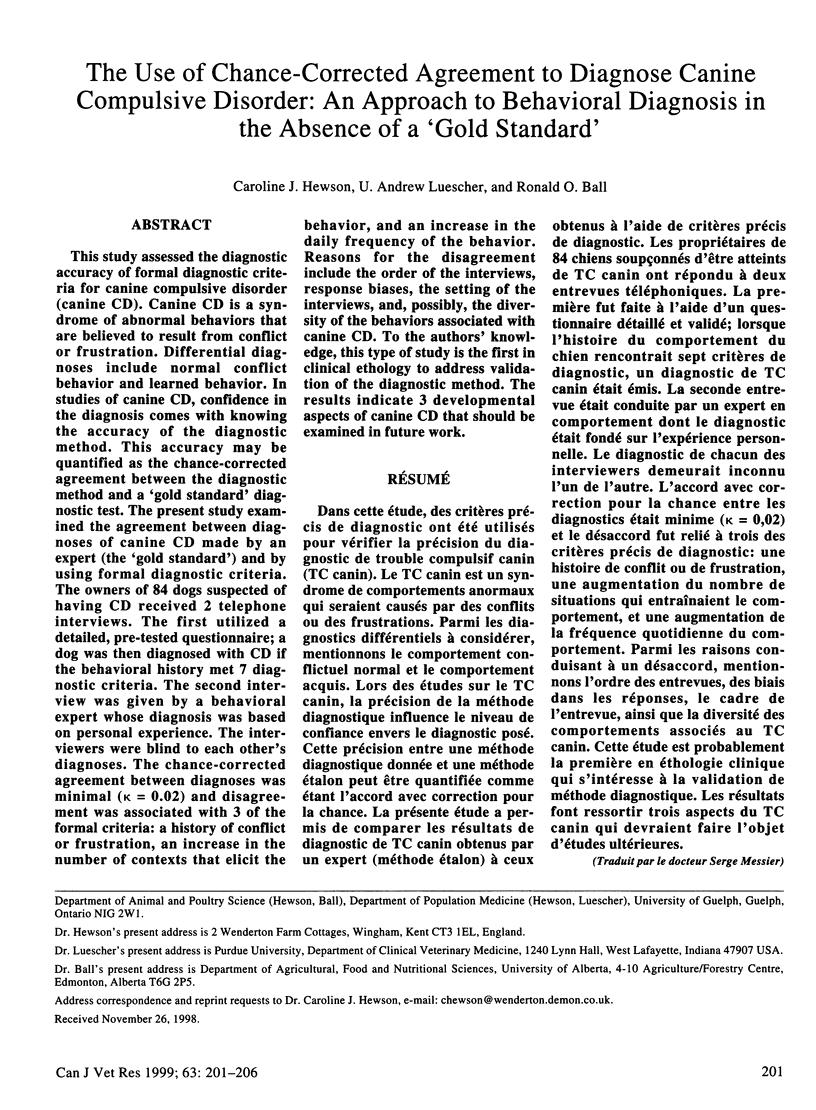
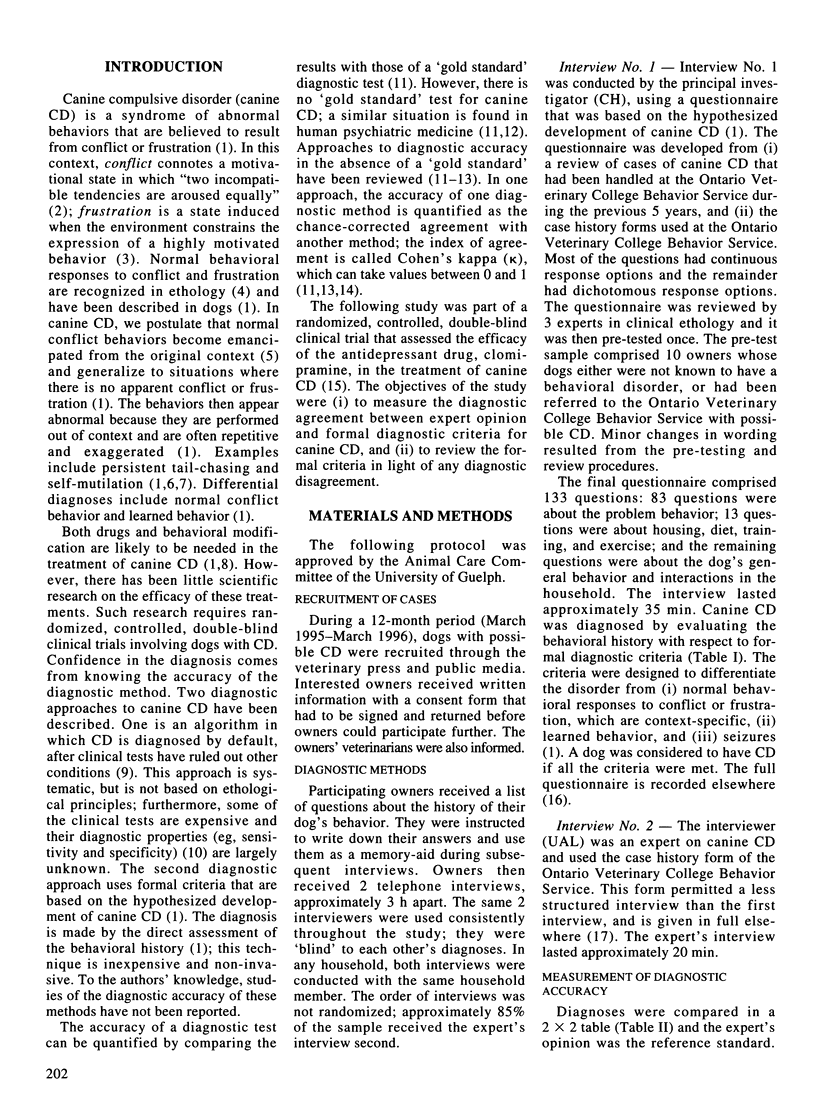
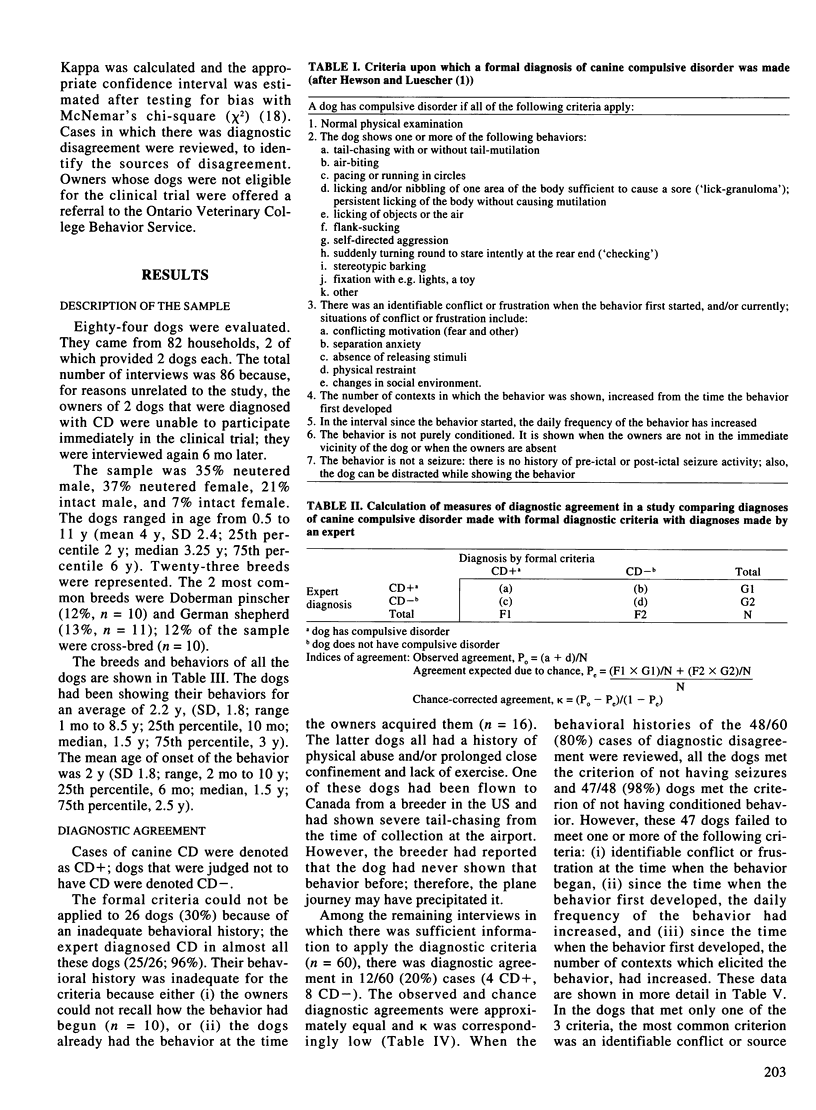
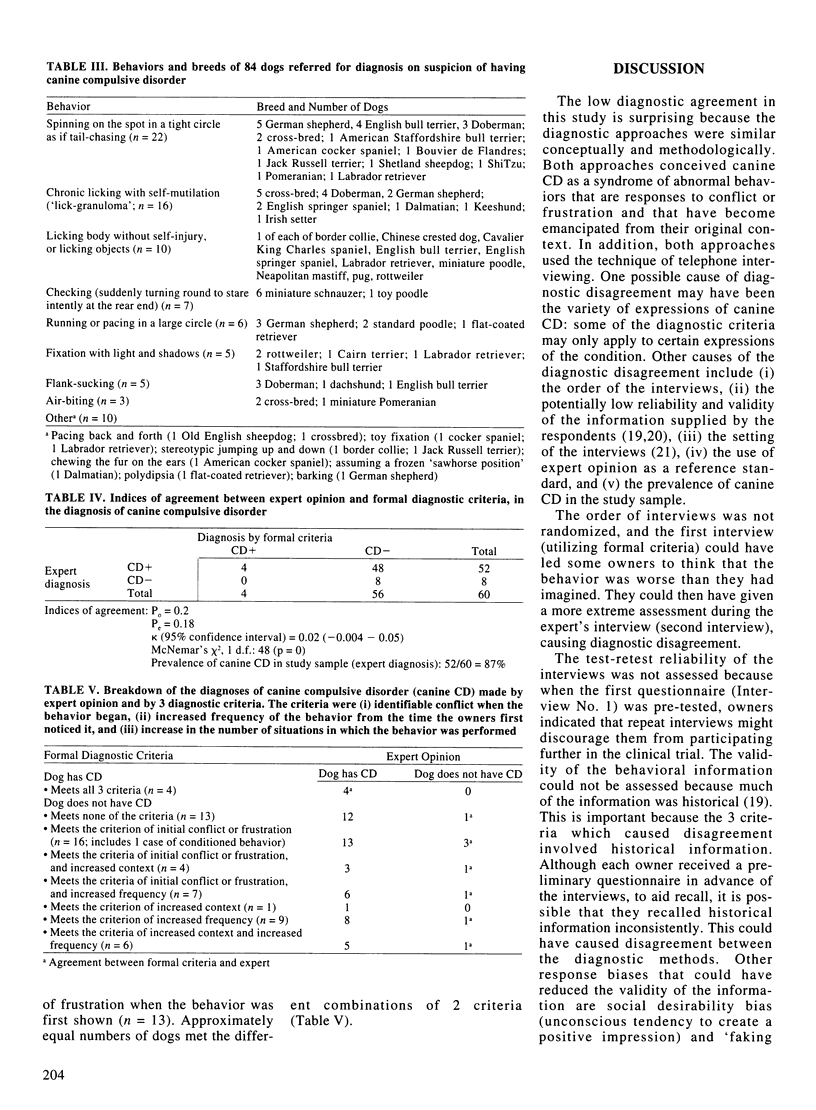
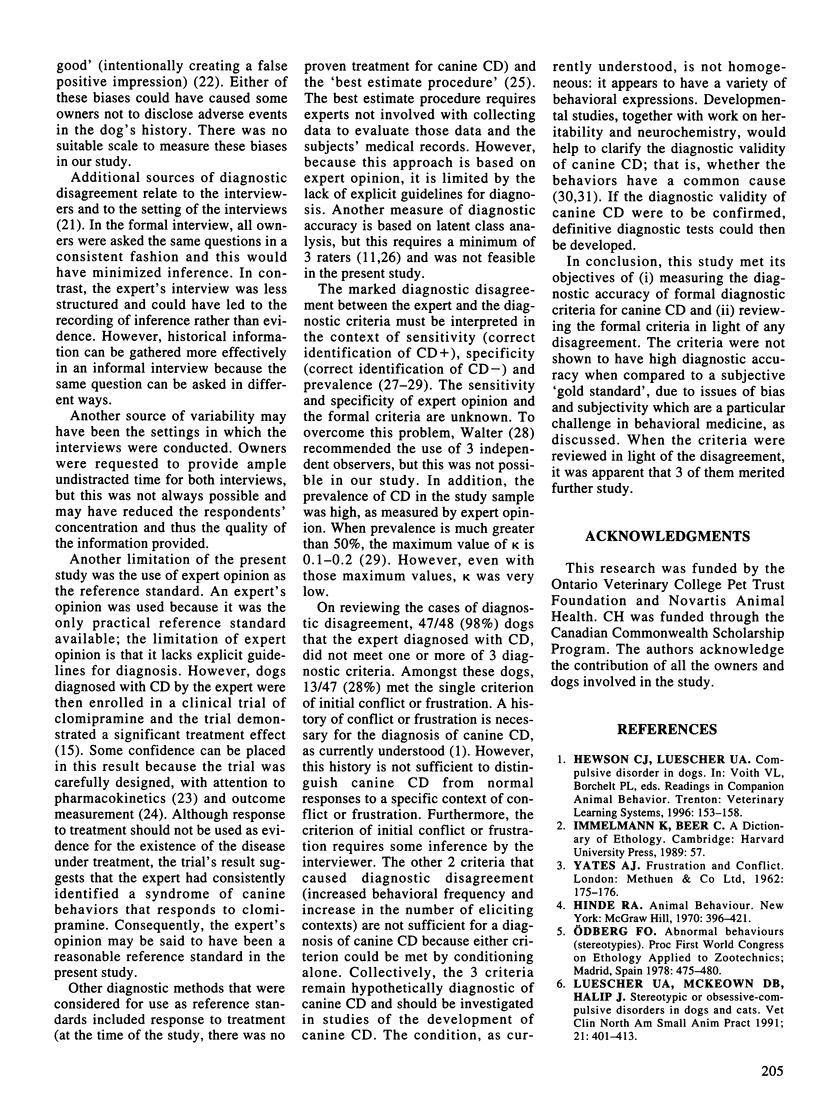
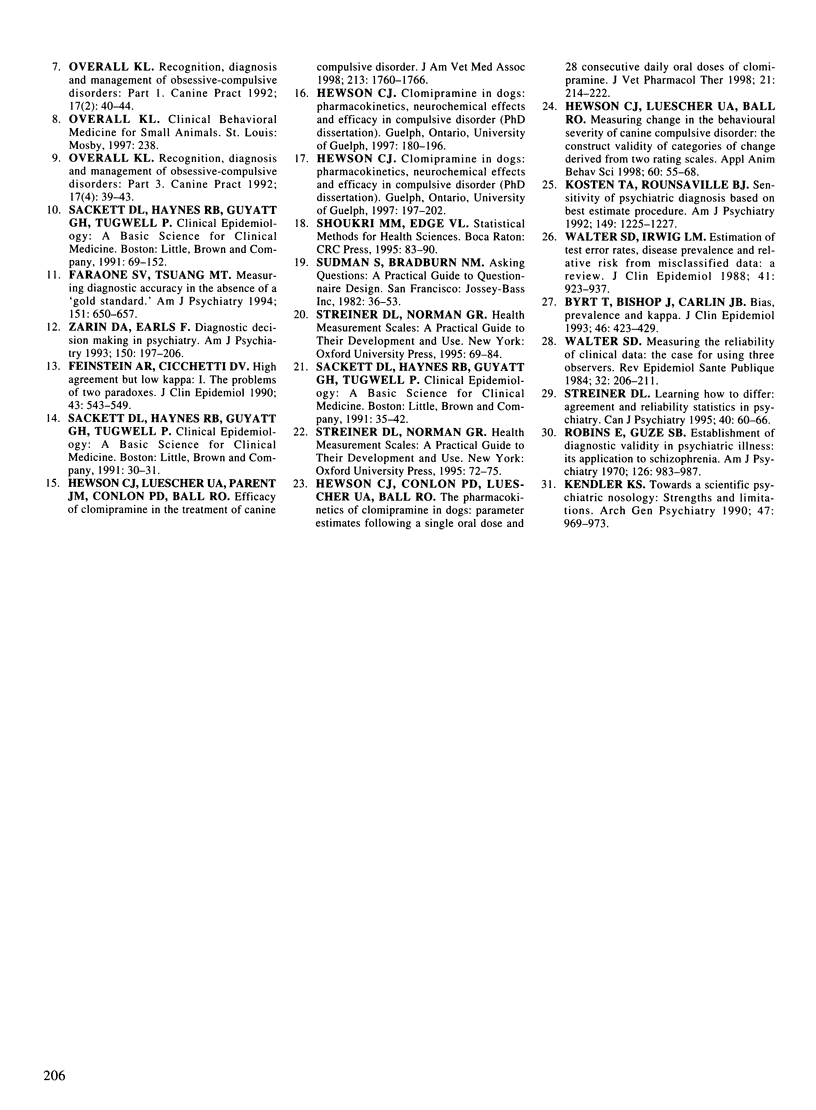
Selected References
These references are in PubMed. This may not be the complete list of references from this article.
- Byrt T., Bishop J., Carlin J. B. Bias, prevalence and kappa. J Clin Epidemiol. 1993 May;46(5):423–429. doi: 10.1016/0895-4356(93)90018-v. [DOI] [PubMed] [Google Scholar]
- Faraone S. V., Tsuang M. T. Measuring diagnostic accuracy in the absence of a "gold standard". Am J Psychiatry. 1994 May;151(5):650–657. doi: 10.1176/ajp.151.5.650. [DOI] [PubMed] [Google Scholar]
- Feinstein A. R., Cicchetti D. V. High agreement but low kappa: I. The problems of two paradoxes. J Clin Epidemiol. 1990;43(6):543–549. doi: 10.1016/0895-4356(90)90158-l. [DOI] [PubMed] [Google Scholar]
- Hewson C. J., Conlon P. D., Luescher U. A., Ball R. O. The pharmacokinetics of clomipramine and desmethylclomipramine in dogs: parameter estimates following a single oral dose and 28 consecutive daily oral doses of clomipramine. J Vet Pharmacol Ther. 1998 Jun;21(3):214–222. doi: 10.1046/j.1365-2885.1998.00138.x. [DOI] [PubMed] [Google Scholar]
- Hewson C. J., Luescher U. A., Parent J. M., Conlon P. D., Ball R. O. Efficacy of clomipramine in the treatment of canine compulsive disorder. J Am Vet Med Assoc. 1998 Dec 15;213(12):1760–1766. [PubMed] [Google Scholar]
- Kendler K. S. Toward a scientific psychiatric nosology. Strengths and limitations. Arch Gen Psychiatry. 1990 Oct;47(10):969–973. doi: 10.1001/archpsyc.1990.01810220085011. [DOI] [PubMed] [Google Scholar]
- Kosten T. A., Rounsaville B. J. Sensitivity of psychiatric diagnosis based on the best estimate procedure. Am J Psychiatry. 1992 Sep;149(9):1225–1227. doi: 10.1176/ajp.149.9.1225. [DOI] [PubMed] [Google Scholar]
- Luescher U. A., McKeown D. B., Halip J. Stereotypic or obsessive-compulsive disorders in dogs and cats. Vet Clin North Am Small Anim Pract. 1991 Mar;21(2):401–413. doi: 10.1016/s0195-5616(91)50041-3. [DOI] [PubMed] [Google Scholar]
- Robins E., Guze S. B. Establishment of diagnostic validity in psychiatric illness: its application to schizophrenia. Am J Psychiatry. 1970 Jan;126(7):983–987. doi: 10.1176/ajp.126.7.983. [DOI] [PubMed] [Google Scholar]
- Streiner D. L. Learning how to differ: agreement and reliability statistics in psychiatry. Can J Psychiatry. 1995 Mar;40(2):60–66. [PubMed] [Google Scholar]
- Walter S. D., Irwig L. M. Estimation of test error rates, disease prevalence and relative risk from misclassified data: a review. J Clin Epidemiol. 1988;41(9):923–937. doi: 10.1016/0895-4356(88)90110-2. [DOI] [PubMed] [Google Scholar]
- Walter S. D. Measuring the reliability of clinical data: the case for using three observers. Rev Epidemiol Sante Publique. 1984;32(3-4):206–211. [PubMed] [Google Scholar]
- Zarin D. A., Earls F. Diagnostic decision making in psychiatry. Am J Psychiatry. 1993 Feb;150(2):197–206. doi: 10.1176/ajp.150.2.197. [DOI] [PubMed] [Google Scholar]


